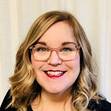Guest Post: 4 Book Writing Secrets by Author Sally Koslow
Today, my friend and friend to all writers, Sally Koslow is giving us her secret sauce for writing success! Sally hails from the world of magazines (where she was a big-time editor, until she wasn’t (read Little Pink Slips).
Today, Sally uses her talent to write novels but she keeps magazines close to her heart and the lessons she learned, right at hand.
Please welcome Sally Koslow back to WFW!
Amy xo
4 Book Writing Secrets from Magazine-Land
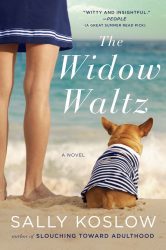 Once upon a time—a long, lovely time—I was an editor and/or writer on any number of mass-market magazines you may know, though my resume also features titles that reside in the graveyard. (Rest in peace, Mademoiselle, McCall’s, and Lifetime.) A few years after I started, I began to write articles of about 4000 words, the standard length back in the day. I wasn’t exposing corruption, but the subjects were serious, like incest (for Glamour) and loveless marriage (for Ladies’ Home Journal.) Over time, I inched up the masthead and stayed put at the thrilling top. There I rarely wrote anything longer than a “How Not to Get Fat After 35” cover-line or a haiku-length editor’s editor. By then, the pieces in most magazines had, like women’s underwear, shrunken. A little more than ten years ago, when I left my last magazine editorial staff, “long” articles were thong-like wisps of about 1200 words. Too often they were about a Kardashian.
Once upon a time—a long, lovely time—I was an editor and/or writer on any number of mass-market magazines you may know, though my resume also features titles that reside in the graveyard. (Rest in peace, Mademoiselle, McCall’s, and Lifetime.) A few years after I started, I began to write articles of about 4000 words, the standard length back in the day. I wasn’t exposing corruption, but the subjects were serious, like incest (for Glamour) and loveless marriage (for Ladies’ Home Journal.) Over time, I inched up the masthead and stayed put at the thrilling top. There I rarely wrote anything longer than a “How Not to Get Fat After 35” cover-line or a haiku-length editor’s editor. By then, the pieces in most magazines had, like women’s underwear, shrunken. A little more than ten years ago, when I left my last magazine editorial staff, “long” articles were thong-like wisps of about 1200 words. Too often they were about a Kardashian.
At that point I had an itch to return to writing, but the last thing I imagined myself completing was a book. Magazines had seemed a perfect fit because I had the attention span of a mayfly. Books cared the bejesus out of me. How did authors maintain interest in one topic or storyline for, quite possibly, two or more years? I‘d read the musings of writers who humble-bragged that a particular book idea had grabbed them so intensely that they’d finished it in only six months. Six months on one blinking project? I’d sooner write assembly instructions for Ikea, or so I originally thought. Yet in the last twelve years I’ve been able to trick myself into writing, roughly, six and a half books: four published novels; one published non-fiction book; two unfinished, probably-never-to-be-published novels (may they also rest in peace) as well as one historical novel on which I’m joyously progressing, and hope to finish by next fall. All of the books were printed in both hardcover and paperback, some in foreign languages.
Whatever I’ve accomplished, I owe in part to magazines. This is what they’ve taught me:
1. We all need a deadline. On a magazine, you juggle a jillion deadlines. Let’s say you work on a big monthly, as I did. The magazine’s managing editor, an ogre disguised as an efficient woman with a clipboard, breathes down your neck every twenty minutes until you get it done…. whatever “it” is. Every day you have numerous deadlines, as does everyone on the team. Eventually, the whole magazine, with all its moving parts, comes together, gets sent to the printer, and the cycle starts all over again. Actually, cycles overlap. You work on the December issue when you’re finishing June, blah blah. Ten-hour days fly by in ten minutes.
What I realized from my years of deadlines was that without a defined time frame and declared cutoff, most people merely perseverate and write nothing. A finishing line is a mirage. Writing a book requires flinty discipline: a potential author needs to give herself a deadline until she’s lucky enough to land a contract, and she receives a deadline from an editor. The fastest way to get a deadline is to enroll in or form a writing workshop where you agree to submit manuscript pages at regular intervals. To meet these deadlines, you must impose additional deadlines on yourself. (This is harder.) You need to tell yourself you will not stir the stew until you’ve written to the bottom of the page, and you’ve got to mean it. You also need to create a schedule and honor it. I, for example, find that I work well in the morning but sag as the day goes by. Knowing this, I pretend I still work in an office, sit myself down at dawn (this is why exercise clothes were invented) and bang away on my computer. Once I’ve done a draft, I turn myself back into a magazine editor and ruthlessly polish.
2. Write tight. Not only do magazines have a finite number of pages, for decades most of them have been designed so pieces end on the bottom of a page. The elements fit together like Lego blocks. (Butt out of this conversation, Vanity Fair.) This requires editors to deftly cut articles and chunks of copy to fit the space designated on a layout without ruining the flow of words and thought. A writer of books should apply the same rule and ruthless trim to eliminate padding that fails to move her story forward. It helps to pay attention to authors who do this well. In The Life of Lucy Barton, for example, the Pulitzer prize-winning author, Elizabeth Strout, is a magician able to reveal character and narrative as much as by what isn’t on the written page as what is.
3. Divide and conquer. A magazine is a collection of long and short articles, columns and visual elements. Even more so, books, though with fewer or no visuals. Try not to picture your growing manuscript as a 100,000-plus-word behemoth. Think of it as a collection of small parts and concentrate on only one at a time –the scene you want to finish, not even a whole chapter. When I wrote Slouching Toward Adulthood: Observations from the Not-So-Empty Nest, I decided to consider it fourteen magazine articles rather than one lengthy book. With any manuscript, you will find that once you get to the two-thirds-completed point, the last third will be easy. Don’t ask me why, but momentum will carry you the distance. I promise.
4. Learn from the competition. Magazine editors always case other magazines. Sometimes it’s to stay on top of freelance writers, photographers and illustrators they might hire, but it’s also to be inspired. When I wrote my first novel, Little Pink Slips, loosely based on my experience when a certain brash celebrity took over McCall’s and kicked my sorry butt upstairs (not that I’m bitter,) I deliberately stayed away from reading books in the same genre, for fear that I might inadvertently copy them. Big mistake. I’ve gone from that extreme to reading as much as I can—which for me means inhaling a book about every five days–hoping to be infected by other, and often better, writers’ work. I tend to focus on novels and memoirs I consider to be of high quality—which, of course, is different for each of us—and try not to get dragged down by humdrum writing. In order to justify the investment of time reading a whole book requires it needs to be special in some way. I also try to cheerlead for other authors, posting reviews on Amazon, Goodreads and Twitter.
The book-writing world is a community. We all need each other—whether or not we also love magazines. I always will.
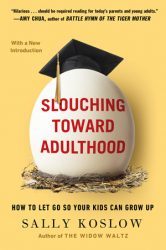
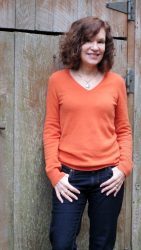 Sally Koslow is the author of the novels The Widow Waltz; With Friends like These; The Late, Lamented Molly Marx; Little Pink Slips and one non-fiction book, Slouching Toward Adulthood: Observations from the Not-So-Empty Nest. She contributes essays and articles to many publications and websites, including The New York Times, Theatlantic.com, More, Real Simple, O the Oprah Magazine and was featured in the anthologies Wedding Cake for Breakfast and DIRT: The Quirks, Habits and Passions of Keeping House. Sally teaches at Sarah Lawrence College’s Writing Institute and at various venues in the New York City area. Previously, she was the editor-in-chief of a number of magazines, including McCall’s. She also works as an independent writing coach. You can reach her through www.sallykoslow.com, @sallykoslow or www.facebook.com/SallyKoslowAuthor. She belongs to the New York Writers Workshop and Tall Poppy Writers.
Sally Koslow is the author of the novels The Widow Waltz; With Friends like These; The Late, Lamented Molly Marx; Little Pink Slips and one non-fiction book, Slouching Toward Adulthood: Observations from the Not-So-Empty Nest. She contributes essays and articles to many publications and websites, including The New York Times, Theatlantic.com, More, Real Simple, O the Oprah Magazine and was featured in the anthologies Wedding Cake for Breakfast and DIRT: The Quirks, Habits and Passions of Keeping House. Sally teaches at Sarah Lawrence College’s Writing Institute and at various venues in the New York City area. Previously, she was the editor-in-chief of a number of magazines, including McCall’s. She also works as an independent writing coach. You can reach her through www.sallykoslow.com, @sallykoslow or www.facebook.com/SallyKoslowAuthor. She belongs to the New York Writers Workshop and Tall Poppy Writers.
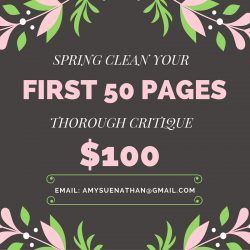
Women's Fiction Writers
- Amy Sue Nathan's profile
- 543 followers


